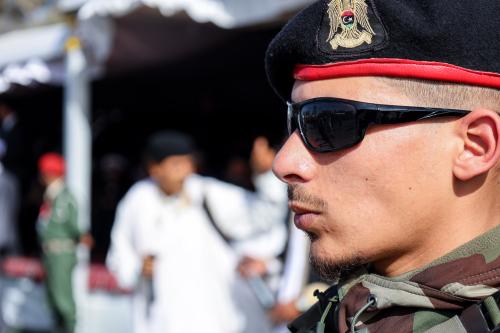Barack Obama will need to make 2011 his Pakistan year. The war in Afghanistan is now the longest in American history. War weariness is growing in every one of the 49 allies and partners engaged with America, casualties are rising in the battlefields on both sides of the Durand line separating Afghanistan and Pakistan, and al-Qaida continues to laud suicide bombers stalking shopping malls in Stockholm and the rest of the world. President Obama’s focus in 2011 needs to be on Pakistan, the epicenter of the struggle against global jihad, and the country whose future is most completely linked with it.
In its December policy review, the White House was appropriately modest in describing the progress of Obama’s strategy in Afghanistan and Pakistan. We are far from being on the edge of anything anyone would describe as success in South Asia. Yet at the same time, we are no longer close to the precipice of defeat and strategic disaster as we were when the president inherited the war in January 2009.
At that time, the al-Qaida core leadership in the border lands on the Pakistani-Afghan border was under minimal pressure and planning new attacks on America, their Afghan Taliban allies had the momentum in much of Afghanistan and were gobbling up territory across the south and east of the country rapidly, and we had just witnessed the worst terror attack in the world since 9/11 in Mumbai, India. In both Afghanistan and Pakistan, Obama inherited disasters because American foreign policy had failed to develop effective strategies for both countries and to resource them properly.
Today, the al-Qaida core is under considerable pressure from the drones. For example, al-Qaida’s number two Ayman Zawahiri, who used to put out a new diatribe against America every other week or so, put out only four messages this year. His operational tempo has been disrupted. But al-Qaida remains agile, resourceful and dangerous. Any let up in pressure from the drones would allow it to rapidly rebuild its capacity.
The Taliban were on the brink of victory in much of southern Afghanistan in early 2009. By every measure, they had the momentum and were winning. The president’s first strategic review, which i chaired, concluded that we were losing the war. Now Nato commanders in Kabul believe they have arrested the Taliban’s momentum, especially in Helmand and Kandahar, the Taliban’s heartland. The gains are fragile and can easily be reversed. Yet there is a reasonable chance that we can begin a transition from Nato-led combat operations in some parts of the country, notably Kabul, to Afghan-led operations in 2011 and finish that task in 2014 as the latest Nato summit in Lisbon promised.
Pakistan, as always, remains the hardest part of this problem. With the world’s fastest growing nuclear arsenal and home to more terrorist groups than any other country, Pakistan’s fragile civilian government has hung on to power longer than most of its civilian predecessors despite the worst natural disaster in its history. Anew US-Pakistan dialogue has begun. But Pakistan faces a growing civil war with parts of the jihadist Frankenstein it helped create like the Pakistani Taliban, and the army remains unwilling to shut down other parts like the Quetta shura and Lashkar-e-Taiba . Pakistan literally holds the keys to any political process in Afghanistan by its ties to Mullah Omar and the Haqqanis.
Obama has promised to visit Pakistan in 2011. He needs to bring concrete offers of help and to deliver clear red lines. Improved access to American markets for textiles, helicopters for counter insurgency and a commitment to an extended strategic dialogue are his deliverables . He will face considerable opposition in Congress to aid requests from the new Republican majority and he will have a hard-sell to explain why we need to help. To do so he must also lay down clear red lines: an end to ISI’s ties to the Taliban and LeT.
India has a huge stake in the outcome. For America a failed or jihadist Pakistan is a nightmare on the other side of the planet, for India it is next door. The president’s visit to New Delhi in 2010 and Prime Minister Singh’s visit to Washington in 2009 have set in place effective coordination between the two powers. Obama’s support for India’s seat in the Security Council, which produced anguish in Islamabad , is a visible manifestation of our global partnership. As Obama works to alter Pakistan’s strategic trajectory in 2011, he should stay in close but quiet partnership with Singh.
The complex regional diplomacy to energize Indo-Pakistani dialogue which would affect the Pakistani army’s calculus has yet to really begin and the Christmas terror watch in Mumbai reminds us the dark forces in Pakistan will try to spoil any move toward reducing tensions. With so much at stake, modest expectations are smart but bold ideas are essential.



Commentary
Op-edIndia’s Big Stake in Obama’s Year of Pakistan
January 2, 2011